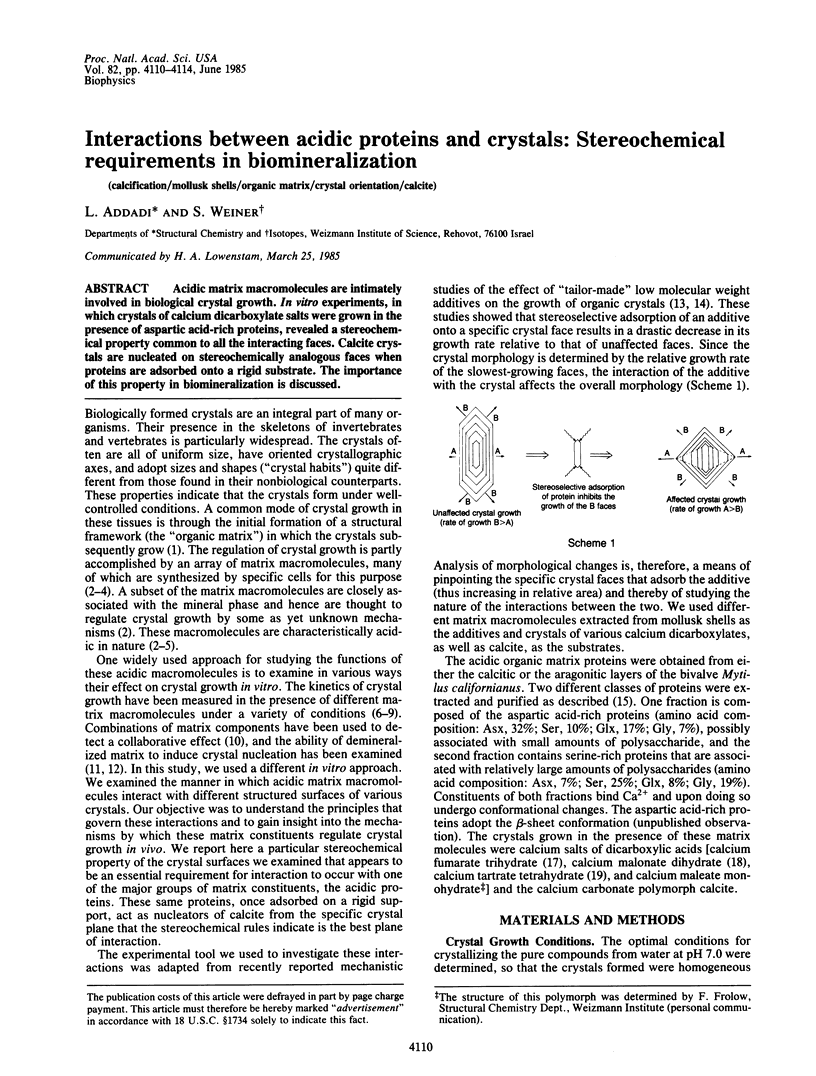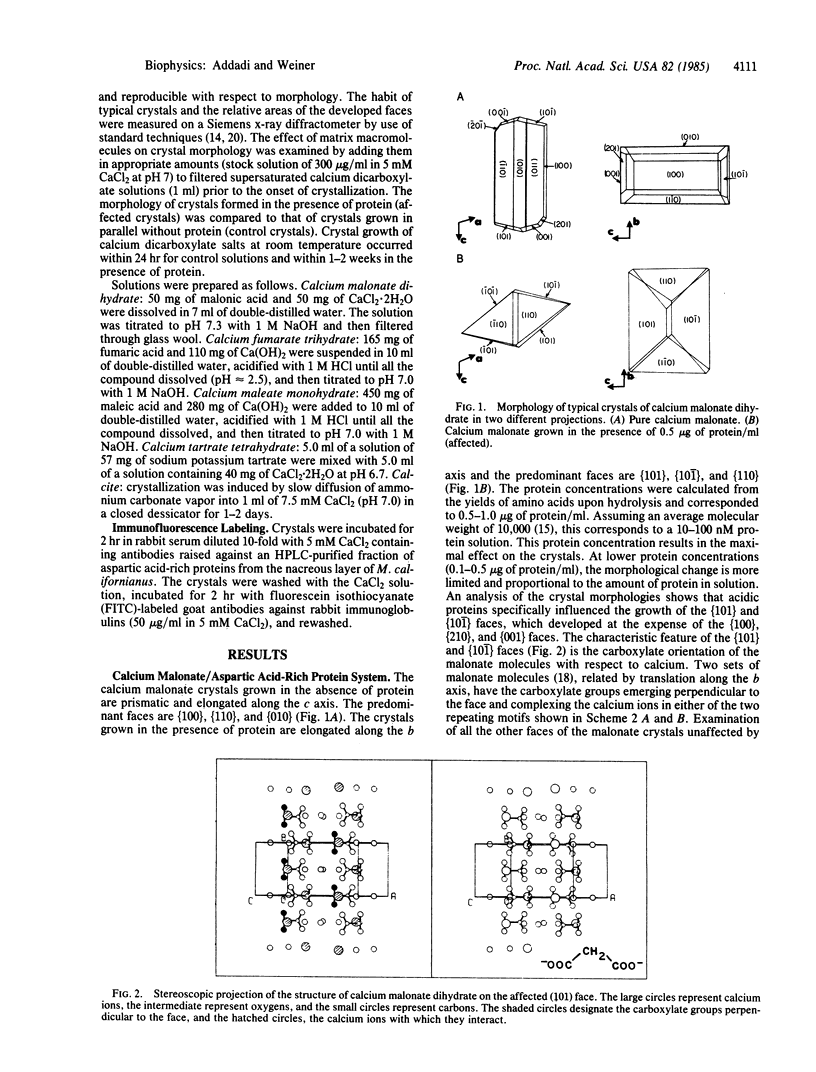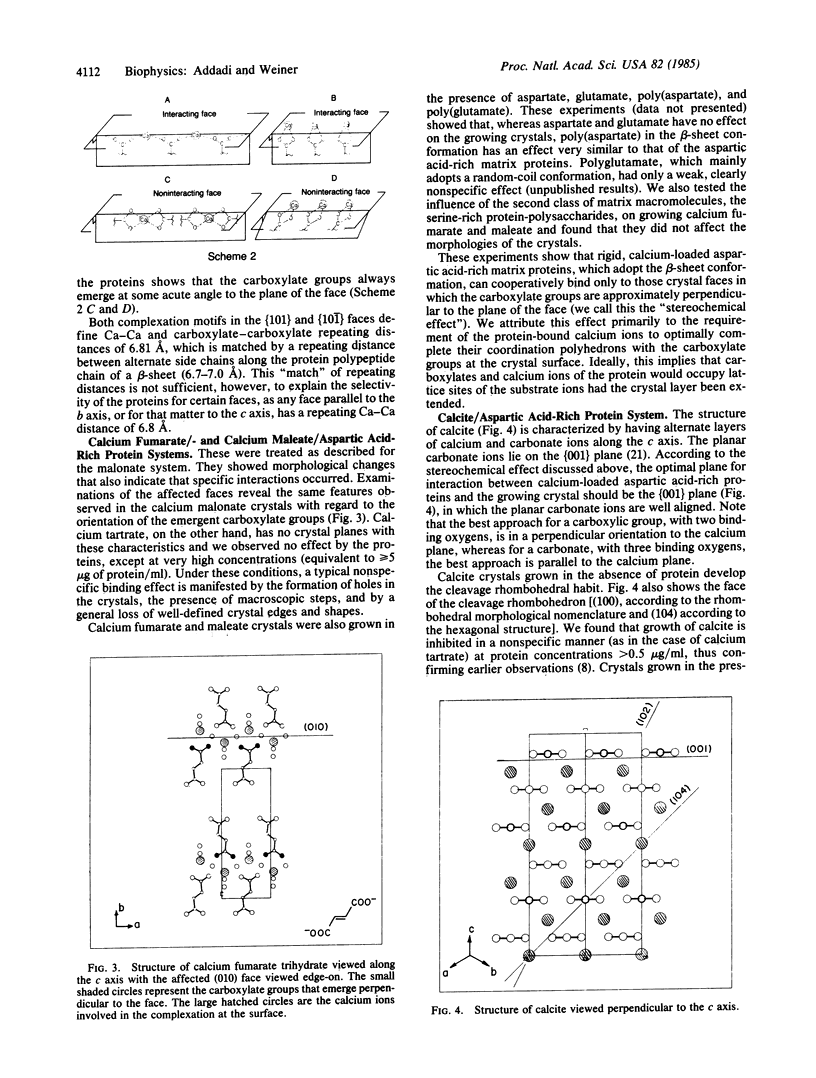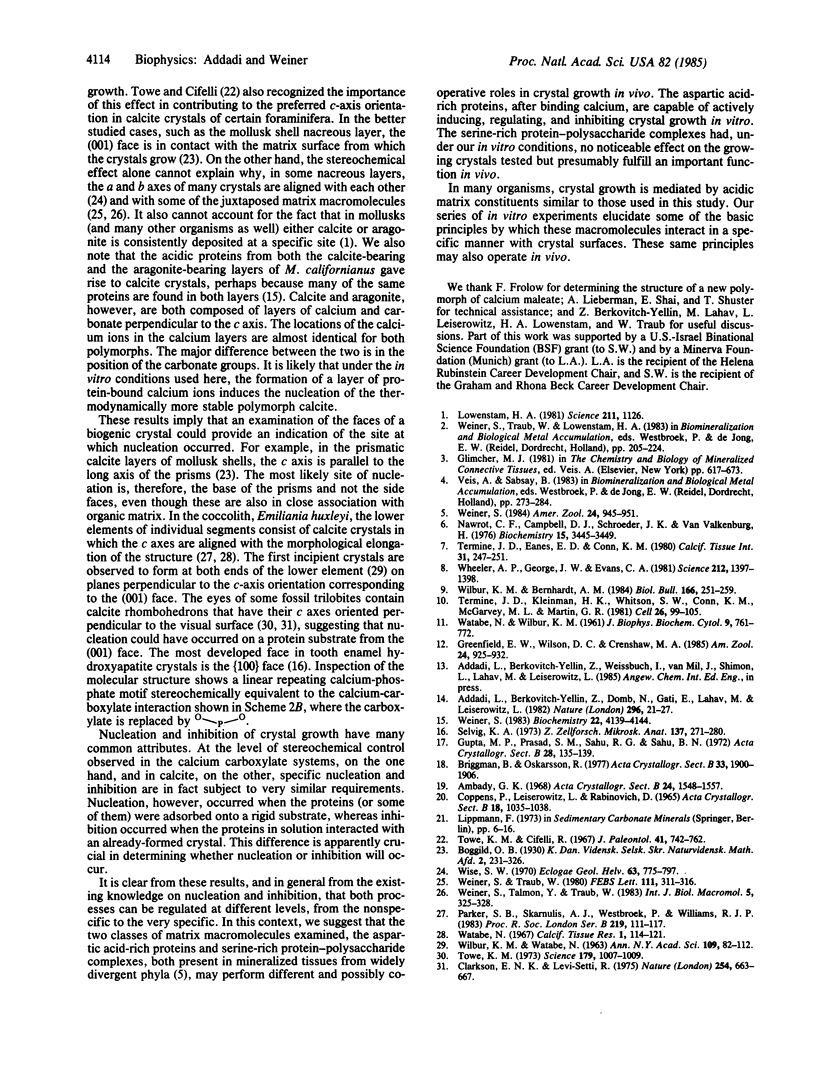Abstract
Acidic matrix macromolecules are intimately involved in biological crystal growth. In vitro experiments, in which crystals of calcium dicarboxylate salts were grown in the presence of aspartic acid-rich proteins, revealed a stereochemical property common to all the interacting faces. Calcite crystals are nucleated on stereochemically analogous faces when proteins are adsorbed onto a rigid substrate. The importance of this property in biomineralization is discussed.
Full text
PDF




Images in this article
Selected References
These references are in PubMed. This may not be the complete list of references from this article.
- Clarkson E. N., Levi-Setti R. Trilobite eyes and the optics of Des Cartes and Huygens. Nature. 1975 Apr 24;254(5502):663–667. doi: 10.1038/254663a0. [DOI] [PubMed] [Google Scholar]
- Lowenstam H. A. Minerals formed by organisms. Science. 1981 Mar 13;211(4487):1126–1131. doi: 10.1126/science.7008198. [DOI] [PubMed] [Google Scholar]
- Nawrot C. F., Campbell D. J., Schroeder J. K., Van Valkenburg M. Dental phosphoprotein-induced formation of hydroxylapatite during in vitro synthesis of amorphous calcium phosphate. Biochemistry. 1976 Aug 10;15(16):3445–3449. doi: 10.1021/bi00661a008. [DOI] [PubMed] [Google Scholar]
- Selvig K. A. Electron microscopy of dental enamel: analysis of crystal lattice images. Z Zellforsch Mikrosk Anat. 1973 Feb 12;137(2):271–280. doi: 10.1007/BF00307434. [DOI] [PubMed] [Google Scholar]
- Termine J. D., Eanes E. D., Conn K. M. Phosphoprotein modulation of apatite crystallization. Calcif Tissue Int. 1980;31(3):247–251. doi: 10.1007/BF02407188. [DOI] [PubMed] [Google Scholar]
- Termine J. D., Kleinman H. K., Whitson S. W., Conn K. M., McGarvey M. L., Martin G. R. Osteonectin, a bone-specific protein linking mineral to collagen. Cell. 1981 Oct;26(1 Pt 1):99–105. doi: 10.1016/0092-8674(81)90037-4. [DOI] [PubMed] [Google Scholar]
- Towe K. M. Trilobite Eyes: Calcified Lenses in vivo. Science. 1973 Mar 9;179(4077):1007–1009. doi: 10.1126/science.179.4077.1007. [DOI] [PubMed] [Google Scholar]
- WATABE N., WILBUR K. M. Studies on shell formation. IX. An electron microscope study of crystal layer formation in the oyster. J Biophys Biochem Cytol. 1961 Apr;9:761–771. doi: 10.1083/jcb.9.4.761. [DOI] [PMC free article] [PubMed] [Google Scholar]
- WILBUR K. M., WATABE N. Experimental studies on calcification in molluscs and the alga Cocolithus huxleyi. Ann N Y Acad Sci. 1963 May 31;109:82–112. doi: 10.1111/j.1749-6632.1963.tb13463.x. [DOI] [PubMed] [Google Scholar]
- Watabe N. Crystallographic analysis of the coccolith of Coccolithus huxleyi. Calcif Tissue Res. 1967;1(2):114–121. doi: 10.1007/BF02008081. [DOI] [PubMed] [Google Scholar]
- Wheeler A. P., George J. W., Evans C. A. Control of calcium carbonate nucleation and crystal growth by soluble matrx of oyster shell. Science. 1981 Jun 19;212(4501):1397–1398. doi: 10.1126/science.212.4501.1397. [DOI] [PubMed] [Google Scholar]




